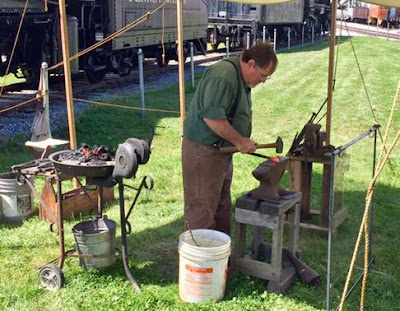As a curator, one of my responsibilities is to catalog donated objects. This often requires research into the objects, as well as the person to whom they belonged. A few years ago, I was lucky enough to work on an impressive collection of World War I military medals belonging to 2nd Lt. Tali Esen Waters. Since we are in the middle of WWI centennial commemorations, I thought now would be the perfect time to share this man’s story of service and heroism.
 |
| Members of 107th Field Artillery who received the Distinguished Service Cross Tali Esen Waters is in the top right corner (excuse the wonky AKF photo of page 652, Pennsylvania in the World War) |
 |
| Distinguished Service Cross awarded to Tali Esen Waters (MM2013.13.1A) |
As a 2nd Lieutenant deployed with the 107th Field Artillery Unit, Waters earned five battle stars and multiple service awards. He earned the Distinguished Service Cross (photo above) while in action on September 6, 1918, near Baslieux-lès-Fismes, France. The Distinguished Service Cross (DSC) is the second highest award given by the US Army and is awarded for “extraordinary heroism.” According to military records, “Lieutenant Waters voluntarily went to the assistance of a large number of wounded soldiers, who were in an exposed position awaiting aid, and continued for several hours to dress their wounds throughout a severe bombardment of gas and high-explosive shells, while hostile airplanes flew low and swept with machine-gun fire the line of litters bearing the wounded. After administering aid to 36 wounded men, Lieutenant Waters helped carry them to a place of safety.” The DSC is usually awarded for combat service; this is a rare occasion of a DSC awarded for humanitarian actions. (For more information, see "The 107th Field Artillery" in Pennsylvania in the World War: An Illustrated History of the Twenty-eighth Division, Vol. 2, 1921.)
 |
| French Croix de Guerre (MM2013.13.2) |
Less than a year later, on January 24, 1919, 2nd Lt. Waters would prove himself yet again, this time taking charge of a first aid station 1,000 meters from the German trenches and providing essential medical aid to 46 soldiers, all while under extreme enemy fire. For this act of heroism, Waters was awarded the French Croix de Guerre with a gilt star (photo above).
 |
| Inter-Allied Games Badge (MM2013.13.5) |
Waters also earned a Silver Star, a United States Victory Medal (service medal), and a New Jersey Medal for Distinguished Service (he moved to New Jersey after the war). He also received a badge (photo above) for his role as a medical assistant at the Inter-Allied Games, an international military athletic event held in 1919 at the newly built Pershing Stadium just outside Paris. Participating athletes were active duty military personnel and those who had served in the armed forces during the First World War. (For more information see Joseph Mills Hanson and George Wythe’s Inter-Allied Games, 1919.)
 |
| Purple Heart (MM2013.13.4A) |
In 1932, the War Department reinstated the Purple Heart and authorized its presentation to WWI veterans who had received General Pershing’s certificate for meritorious service or those who had been wounded in action. Tali Esen Waters’s Purple Heart is now part of the PMM collection. (For more on the history of the Purple Heart medal, see Fred Borch’s article, "A Heart of Purple: The Story of America's Oldest Military Decoration and Some of its Recipients," in the Winter 2012 issue of Prologue Magazine from the National Archives.)
Without a doubt, the war had taken a toll on Waters’s medical ambitions. He and his wife, Isabelle, moved to West Orange, New Jersey, where they lived a quiet and happy life; Tali managed a carpet factory in New York City. It was in West Orange where Tali and Isabelle would befriend the Heselton family. The Heselton and Waters households became so close that upon Tali’s death in 1959, Isabelle gave the Heseltons his military medals. The Heseltons, honoring Tali Esen Waters’s contributions and sacrifices, donated the medal collection to the Pennsylvania Military Museum in 2013. These medals, along with other World War I artifacts and stories preserved at the museum, provide us a with a glimpse into the sacrifices ordinary Pennsylvanian men and women made during The Great War.









